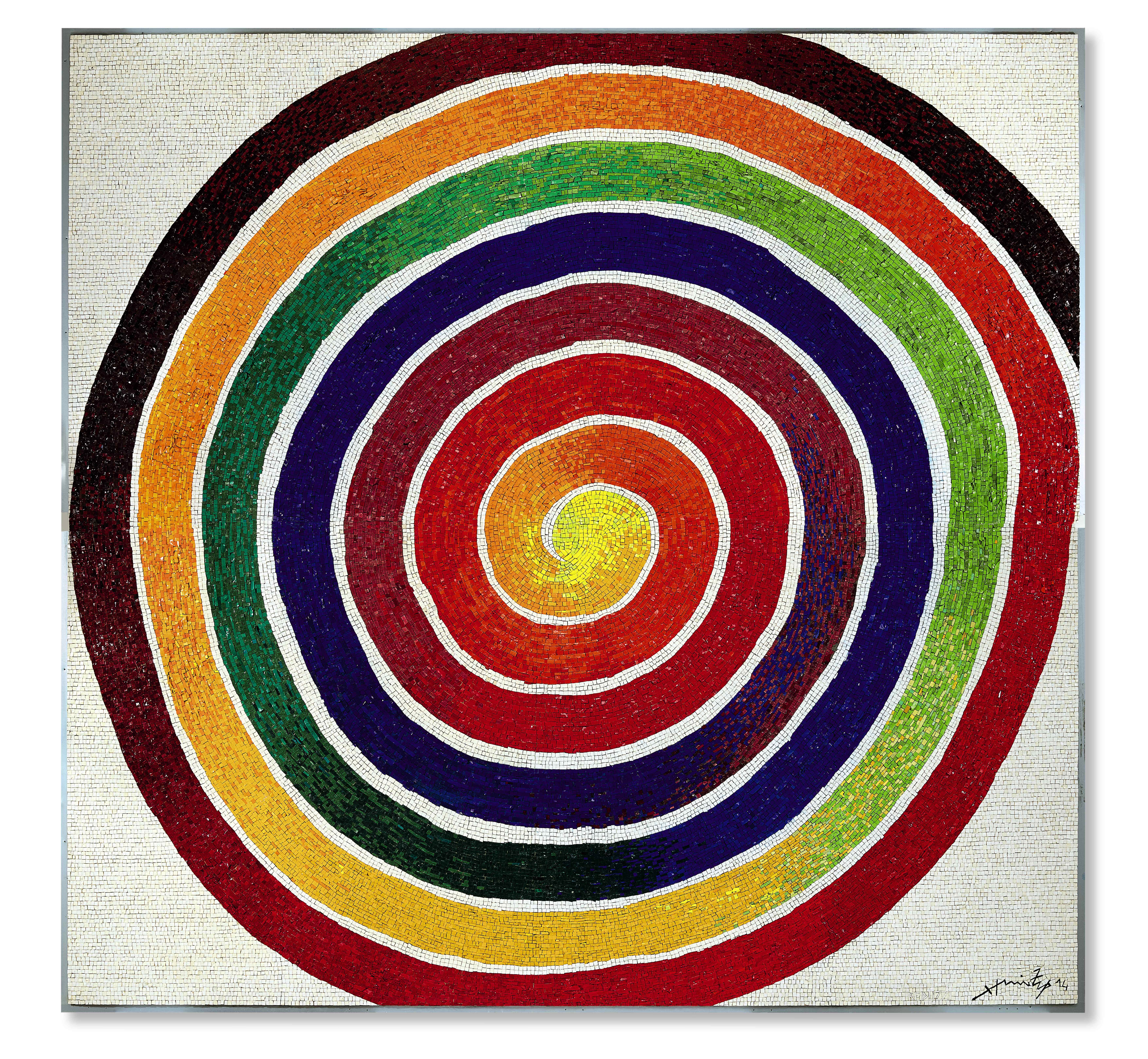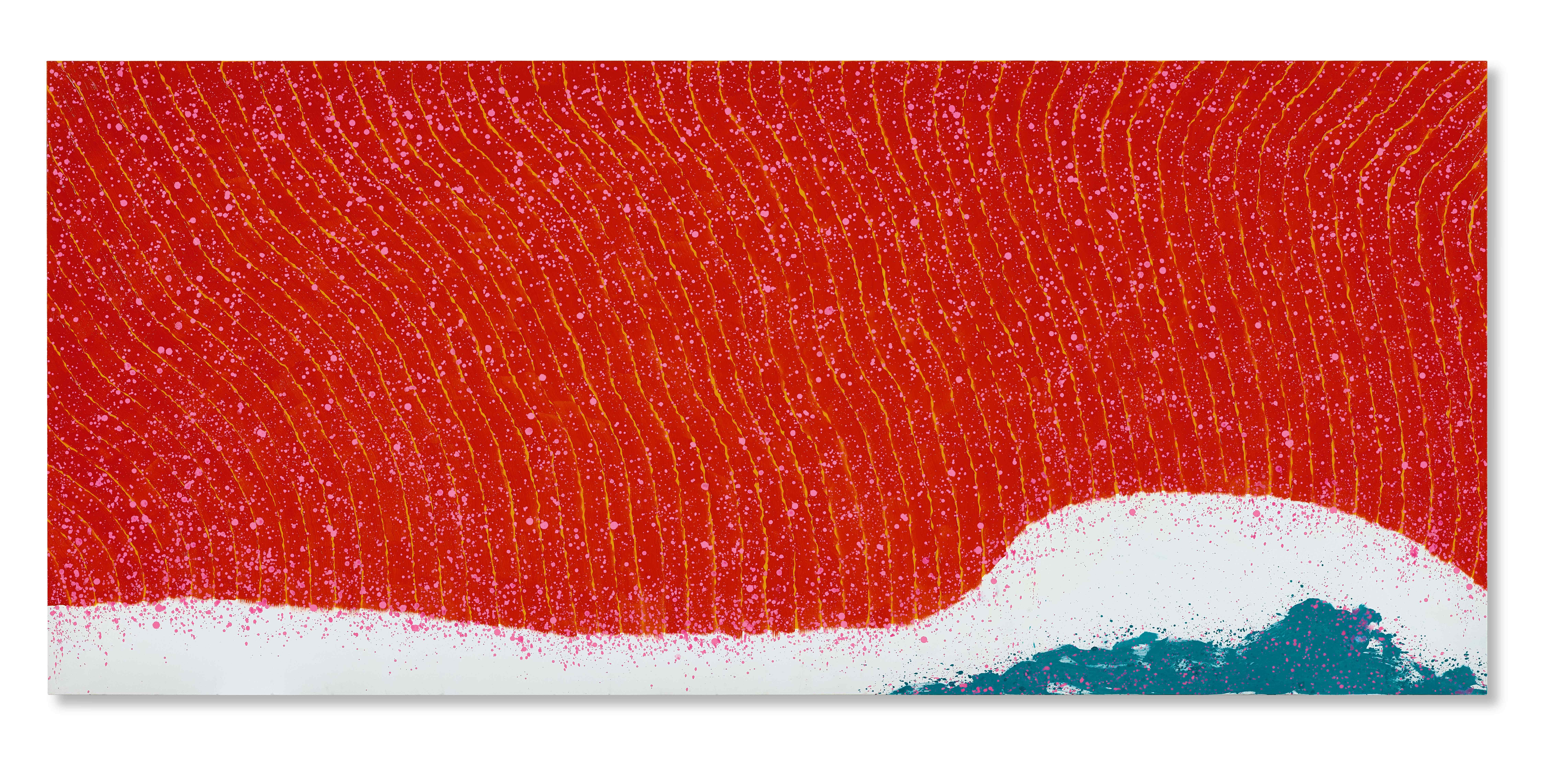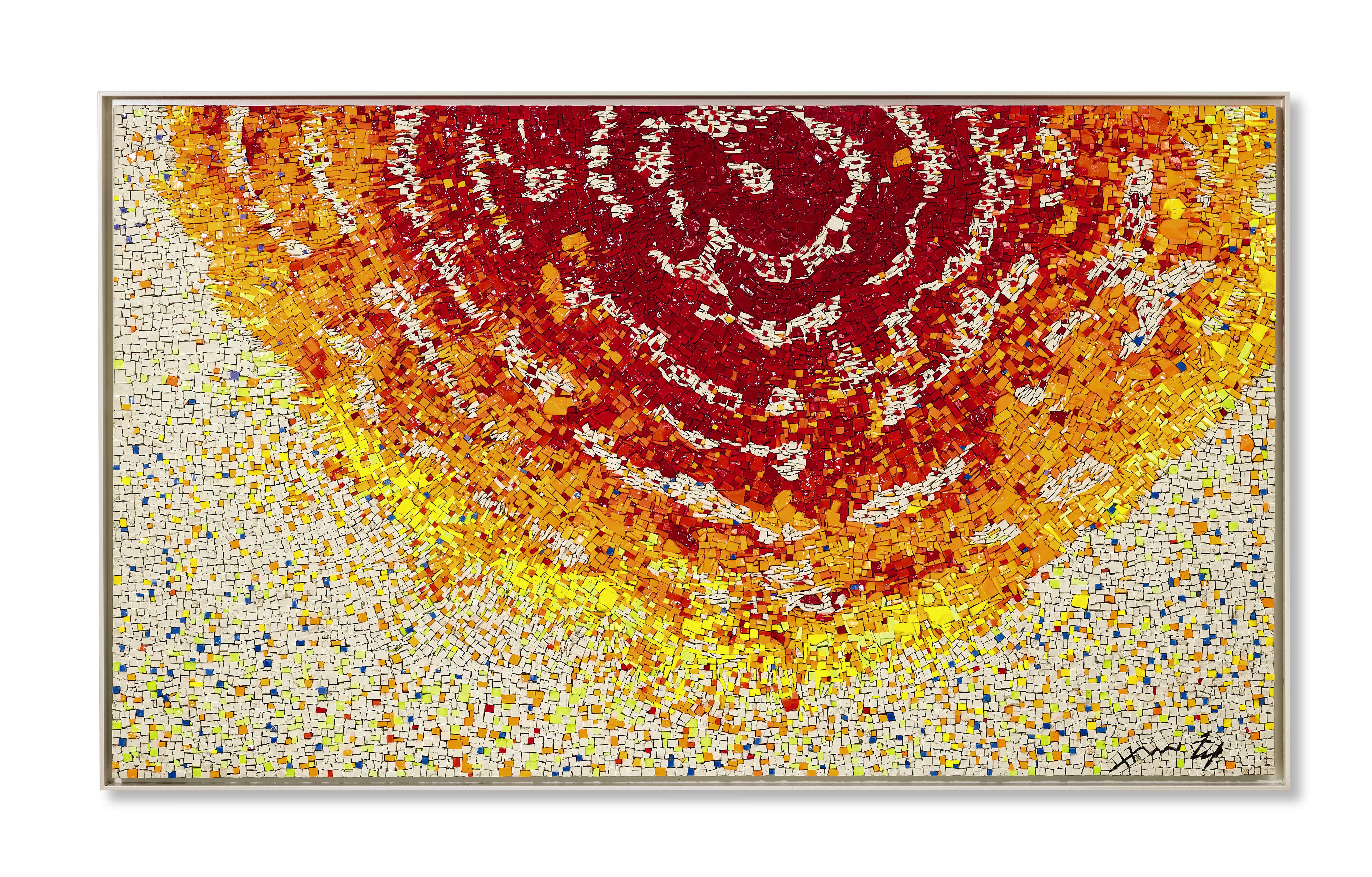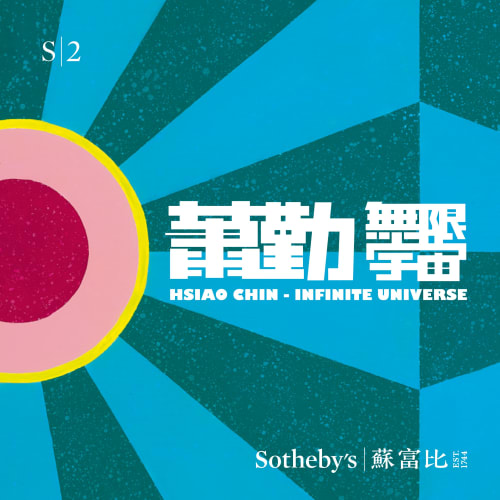Sotheby's is honoured to present the largest solo exhibition of Hsiao Chin in Hong Kong, "Hsiao Chin - Infinite Universe", with support from the Hsiao Chin Art Foundation, the artist and his gallery representative as well as from private collectors of his works. Running from 10 September to 9 October, the exhibition features 26 works by the modern Asian artist from the 1960s through to the present day, including the debut showing of a complete series of his glass mosaics works. Founder of the "Punto International Art Movement", Hsiao was a prominent figure in the international post-war art scene, active in both Eastern and Western art circles. Using Eastern aesthetic ideas to create a distinctive style in the field of abstract painting, he garnered recognition from the Western art world.Hsiao Chin, the artist, says, "Following a solo exhibition at the Musée Guimet earlier this year in Paris, I am delighted to be invited by Sotheby's Hong Kong Gallery to stage the "Infinite Universe" selling exhibition this autumn. I once explained that to be human is a limiting condition when considering one's place in the universe, and that artists should actively express spirituality for the benefit of mankind. Through various media, I wish to convey to viewers of my artworks my own ceaseless thoughts and insights, to communicate my studies of life, the universe and infinity, so that they too can gain a deeper understanding."
Hsiao Chin's paintings from the Movimento Punto period are best represented by his Dancing Lights series, comprising only 19 works. In this series, Hsiao divided his canvases between top-heavy 80-20 proportions, a compositional device allowing viewers to connect with the visual experience of looking up at the sky. He adopted this style throughout the 1980s and 1990s, and it later became the basis for the widely acclaimed The Eternal Garden series.

Post-War Legends: Movimento Punto (1961 - 1966)
In 1961, Hsiao Chin founded Movimento Punto in Milan, a cultural movement aimed at rescuing the post-war art world from an aimlessness he felt was the result of an overabundance of movements. Thirteen exhibitions featuring artists from around the world were held in different European cities throughout 1961 to 1966, stimulating an exchange between East and West. Hsiao's work from this period reflects the major cultural traits of East and West, in which he created a distinctive mode of philosophical abstract painting and shaped his first mature period. His work clearly expressed his interest in exploring the mysteries of the universe and living energy; while the circular and square symbols seem to echo "heaven is round and earth is square," an Eastern concept of the universe that underpins many of his artworks.

The Eternal Garden Series: The Final Ascendance of Zen and Qi
Hsiao Chin experienced a tragic twist in his life when his daughter Samantha unexpectedly passed away in 1990. Devasted, Hsiao later came to experience an epiphany about the meaning of life, and created his classic series: The Eternal Garden, The Great Threshold, Ascendance of Samantha, Samadhi, Embodiment of the Soul, and Light on the Other Shore. These works embody Hsiao's realisations about life brought about by the immense pain of his loss - that life and death are just different forms of existence. He melded a rational understanding of Zen and Daoist philosophy, which he had cultivated since the 1960s, into the softest emotions in his life; and his abstract painting continued to develop around the themes of Zen and Qi.

Glass Mosaics: Creating Across Boundaries (2005 - 2010)
For the first time, a complete series of 12 glass mosaic works by Hsiao Chin will be displayed in this selling exhibition. Since 2005, Hsiao has been using his paintings as blueprints for the mosaic works, producing only 20 works over a period of 15-years. Glass mosaic has long been integral to European religious art; through this series, not only has Hsiao cleverly fused Eastern philosophies of the universe with Western religion and theology, he has also elevated his abstract paintings from the two-dimensional to the three-dimensional, breaking free from the limitations of a canvas. The featured mosaic works show rich, riotous colours in simple compositions; where the mosaic inlays replace the colours and brushstrokes of the painting, the tone shifts from light-hearted to forceful, making viewers feel as if they are standing in a medieval church, reflecting on the epic power of nature.


